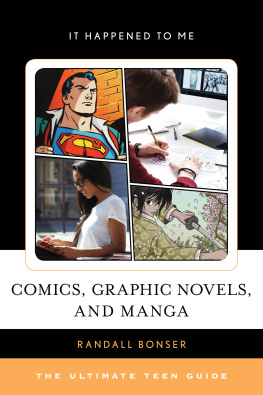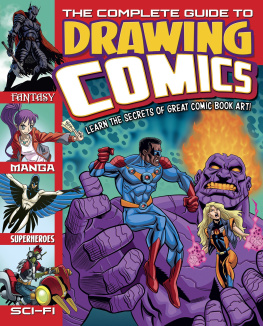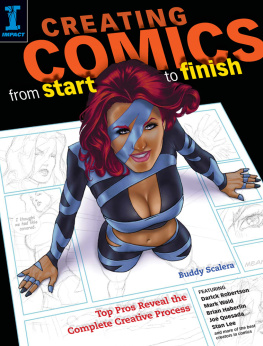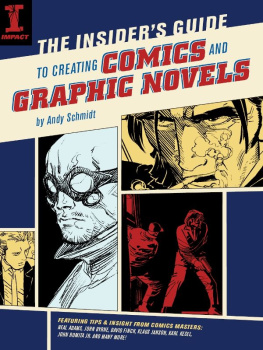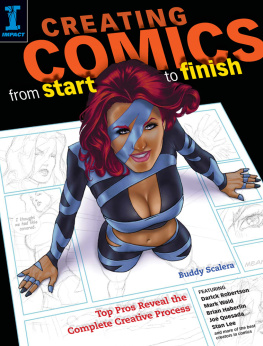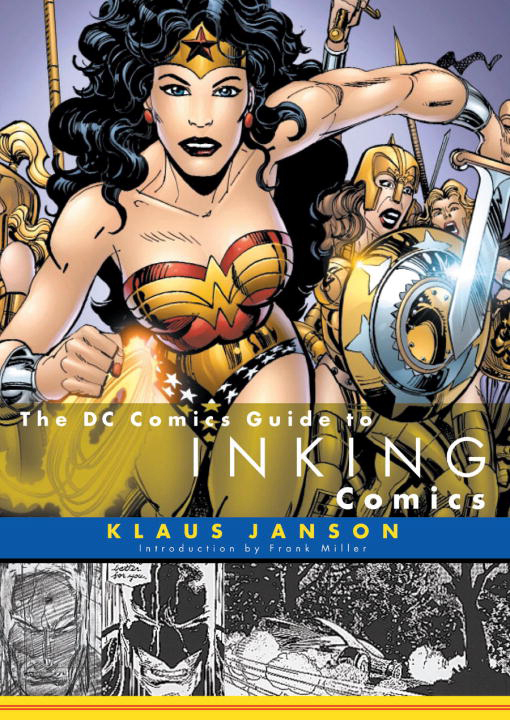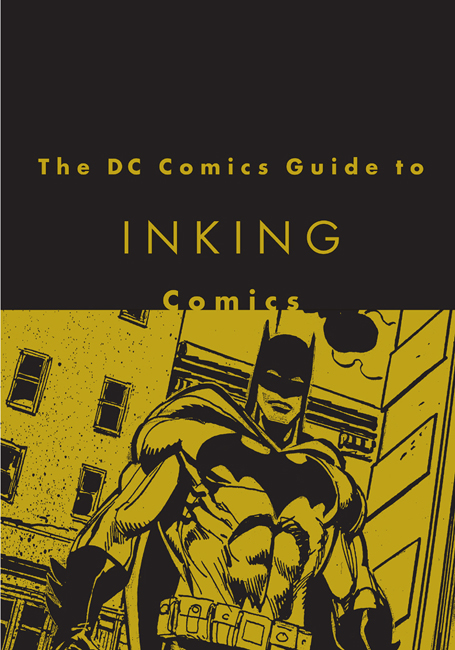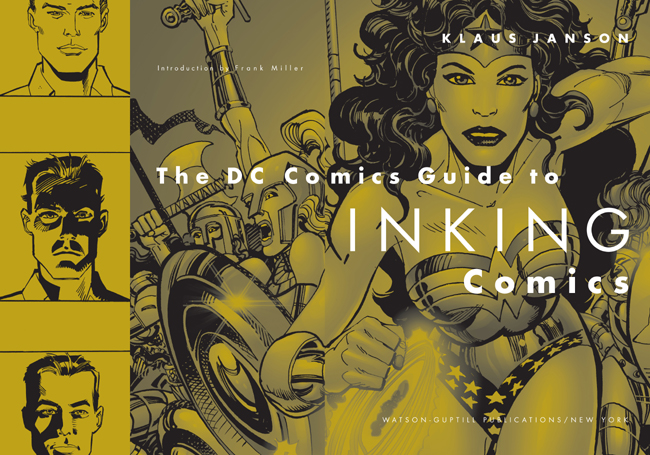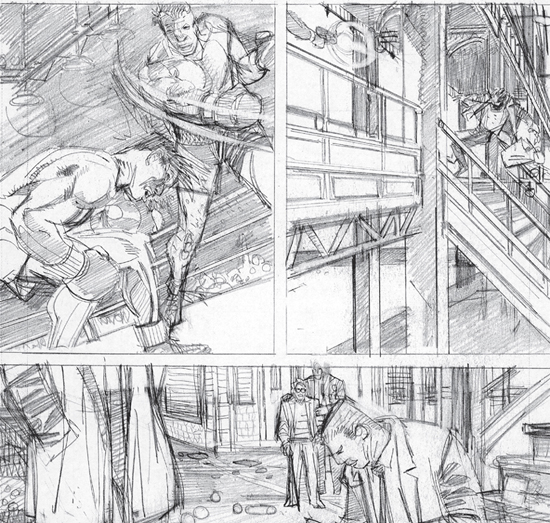The material in this book was first published in print in 2003. It has been reissued in eBook format, with no editorial changes, in 2013.
Text copyright 2003 by Janson Art, Inc.
First published in 2003 in the United States by Watson-Guptill Publications, an imprint of the Crown Publishing Gruop, a division of Random House Inc., New York.
www.crownpublishing.com
www.watsonguptill.com
All rights reserved.
Klaus Jansons artwork has brought to life such characters as Batman, Punisher, Daredevil, and Spawn. This book represents the theories Janson has learned and applied while teaching at the famed School of Visual Arts. He lives in New York City.
Dedicated to my editor Steve Kort,
for his unending patience.
CONTENTS
PART ONE:
INKING
PART TWO:
STORYTELLING
Drawing is a physical act. It isnt pecking away at a keyboard like Im doing right now, trying to arrange a fixed, immutable 26 letters and a handful of punctuation marks into coherent sequence. No. When you draw, your every move is a first-time event. Something the world has never seen before, big or small, for better or worse.
Drawing is a physical act. Sure, your mind must be fully engaged. You must avoid distractions. But the same could be said of a boxer or a basketball player.
And just as the point guard has to keep the basketball moving down the court, dribbling, bobbing and weaving, the comic book cartoonist should move vigorously across the page. Your reader is moving through a story, not lingering in a museum. Use your wits and your smarts, but dont dither. Use them now.
Make a mistake? Fix it. Do something just plain stupid? Do it over. But keep moving. The reader will.
Drawing is a physical act. If youre drawing for reproduction, its a series of physical acts, the most purely sensual of which is inking. When it goes well, in those moments a cartoonist lives for, the black hitting the bristol makes the page feel alive.
Its the ink that makes the brick feel ragged, hard and cruel, the ink that makes the flesh seem warm or cold, firm or soft.
As Will Eisner recently said to me, inking is sexy.
Inking is drawing. So draw. Dont just dutifully, painstakingly execute tapered lines somewhere between the eye and the jawbone. Feel the cheekbone those lines are supposed to describe. Drawing is intimate. Tactile. Especially when youre drawing with ink.
As Klaus Janson will point out once I shut up, comic-book penciling and inking are a single craft, separated shortly after birth. It was surely a forced separation, and inker has the ring of a false distinction, making this step in cartooning sound purely technical. Nonsense. Its as spontaneous and personal as any other. Its just as much an act of drawing as what we do with the pencil.
So, yeah. A false distinction. An artificial wall, set up to facilitate a factory-style system. Yet the law of unintended consequence can cut either way. Good can come of it.
I enjoyed a many-year collaboration with Klaus. I dont think theres a chance either of us was, at that time, capable of anything approaching the punch and verve of our partnership. As Klaus notes, a third artist, neither and both of us, was created in our joyful, monthly game of creative mumblety-peg.
Let Klaus take you through the paces, here. Then go take a brisk walk, or go for a swim, or hit the gym. Get your blood up.
Then come back to your board and attack the page.
Frank Miller
New York City
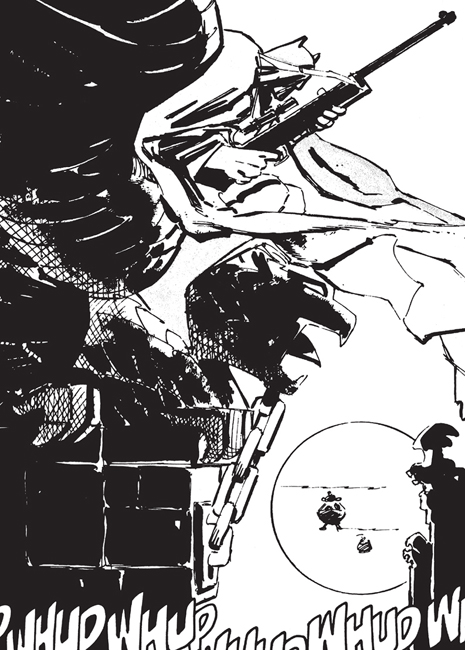
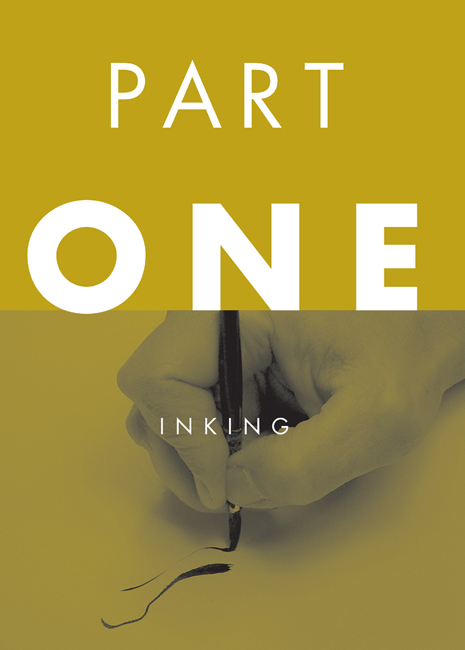
Comic book inking is an extremely esoteric and frequently misunderstood art form. It was born out of creative and financial necessity during the earliest days of comic book publishing. As soon as the monetary potential of comic books was realized, publishers naturally made an effort to get as much work out of the talent as possible. The more pages an artist could draw, the more books the publishing houses could print. The more books on the racks, the more profits could be made. Publishers reasoned that they could get two or more pencilled stories from a popular artist in the time it usually took for that same artist to pencil and ink one story. Artists also found that their income doubled or tripled as they concentrated just on penciling. It became more efficient and profitable for publishers to hire another artist and pay that person a lower rate to ink the pencilled pages. The assembly line method of working that proved so successful with automakers in Detroit found its way into comic book publishing. Comic book inking was born.
The materials needed to create art can often be very rudimentary and inexpensive. In order to draw, the artist needs paper and a pencil. Pen, brush, ink and paper are also affordable and uncomplicated for the artist working in ink. But everyone has probably struggled at some point with the most basic tool of drawing: a pencil. Do not let the simplicity or affordability of these supplies deceive or lull you. Art is very difficult. It demands humility and respect. It also requires a tremendous amount of practice, determination and commitment on the part of the artist. Your ability to achieve an understanding of this craft and your ability to make a living is largely a result of your determination and your will. Talent makes an appearance somewhere. But talent with no drive or hunger is pretty darn useless. The amount of passion and stamina required to become and remain an artist has to last a lifetime. You have to want this more than


